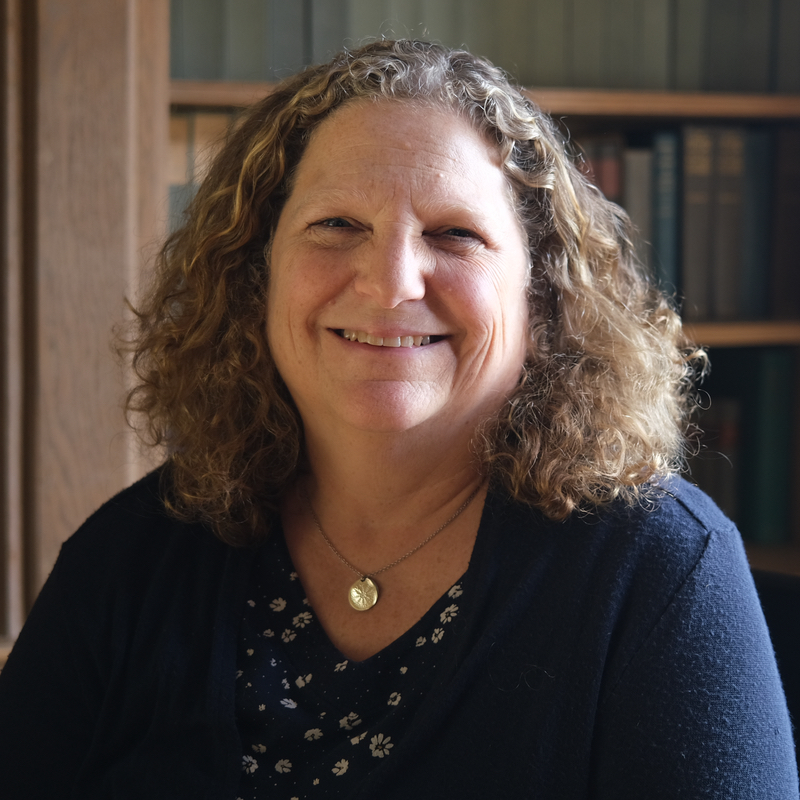- Home
- News
- Professor of Comparative Literature and Media Arts Releases New OSUN Strengthening Guide | August 23, 2024
Professor of Comparative Literature and Media Arts Releases New OSUN Strengthening Guide

GREAT BARRINGTON, MA — Simon’s Rock professor of Comparative Literature & Media Arts Jennifer Browdy received an OSUN grant in spring 2023 to produce a Liberal Arts & Sciences “Strengthening Guide.” This guide draws on her more than 30 years of experience in scaffolding the assignments leading to an academic paper in the humanities, and also incorporating some ideas about using AI productively.
As a graduate student earning her MA/PhD in Comparative Literature at New York University, Browdy taught in the University’s Expository Writing Program; and, after beginning her Simon’s Rock teaching career in 1994, was later trained in the Bard Writing & Thinking approach by founding faculty members Natalie Harper and Jamie Hutchinson. Adding to her extensive knowledge, Browdy also spent nine years teaching in an interdisciplinary, writing-intensive First Year Seminar program at the University at Albany, SUNY, with 80 students per year.
“At Simon's Rock I've probably taught more of our Seminar classes than anyone else now on the faculty, often every semester. So it's no exaggeration to say that I have a lot of experience in teaching academic writing in the humanities,” she said.
With the rise of AI programs and their commercialization, many creatives found themselves unsure of how to navigate it and its uses as a tool for ethical production. Browdy realized its potential positive uses — and its potential cons — almost immediately.
“When generative AI came along, predominantly ChatGPT and its cousins, it was as revolutionary in the humanities as the calculator or the computer was for math. It is an amazing compositional tool. It does not replace human creativity, but can perhaps augment it, if used carefully and judiciously. I immediately perceived that as faculty teaching writing for the humanities fields (and in the sciences too, to some extent) our job was going to change profoundly.”
ChatGPT’s primary function is a chatbot and virtual assistant that enables users to generate and refine content, answer questions and engage in the classic chatbot functions including engaging in conversations with an artificial language model. Similar models, including AI systems such as Google’s Gemini, carry out many of the same tasks, but lack an authentic human voice throughout its content.
“ChatGPT may be able to write a script, but it cannot speak it from the heart the way a human can,” said Browdy. “The essential human qualities of caring, compassion, empathy, and passion are ones we will now be able to develop all the more fully, using AI tools responsibly.”
Browdy nurtures this way of thinking by encouraging her students to lean into including their personal experiences in their writing, a skill that resonates with her long standing scholarly interest in what Browdy calls the "purposeful memoir".
“So many outstanding leaders in all fields have written personal narratives that give us valuable insights into how they developed the way they did, and even at a young age, it's worthwhile for students to reflect on their own path as emerging leaders in whatever endeavors they choose to pursue. ChatGPT cannot do this reflection for them, though it may be able to help in some ways.”
On August 6, Browdy led a presentation of the Guide for OSUN faculty via the Liberal Arts and Sciences Collaborative Roundup for a well-attended and appreciative audience.
“Although much of what I laid out will be familiar to our Simon’s Rock faculty, it is not the default out in the world,” said Browdy. “Simon's Rock requires almost all incoming faculty to take the Writing & Thinking faculty training, and teach at least once in the Writing & Thinking workshop, which naturally creates a pedagogy in the round, so to speak — it's a student-centered, very active approach to learning. Unlike many other colleges, we have very few classes at Simon’s Rock that are entirely lecture-based.”
The steps outlined in Browdy’s LAS Guide dissects her methods and translates them to allow Simon’s Rock students to engage in active, collaborative learning, ultimately preparing them for the multi-step drafting process that results in a polished academic paper.
“I certainly hope that much of what I outlined will be familiar to Simon's Rock First Year Seminar and humanities faculty, but for the most part it's something we just evolved over time, through trial and error as well as watching and listening to colleagues with more experience, as I did as a young faculty member learning from Natalie Harper and Jamie Hutchinson — who were, it should be said, my senior thesis advisors when I was a student at Simon’s Rock.”
Browdy’s guide has been circulated digitally amongst faculty members.